
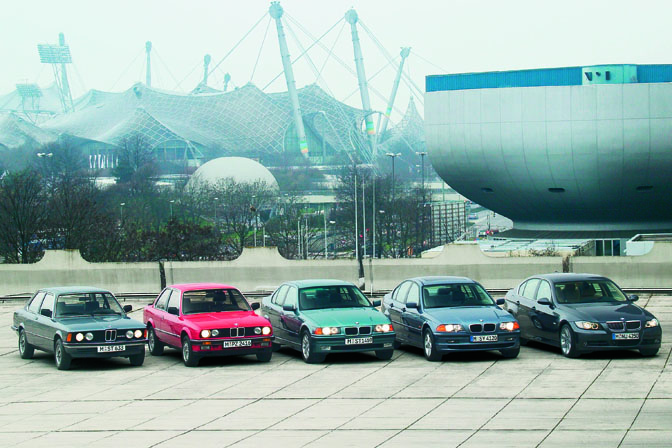
The long history of BMW is filled with iconic models, but none of them are as influential as the 3-series. For over 30-years the 3-series has been a favorite of everyone from executives to weekend racers to housewives, and has long stood atop the sport sedan market on all corners of the globe. As part of our special BMW features this month, a look back at history this iconic model is in order.
Whenever you deal with a model as influential as the 3-series, it's difficult to "sum up" its history in a short blog post. I would guess that a lot of the info presented here is likely to be common knowledge even to those that aren't BMW enthusiasts…
With that, let's travel back to the '70s where the 3-series legend was born.
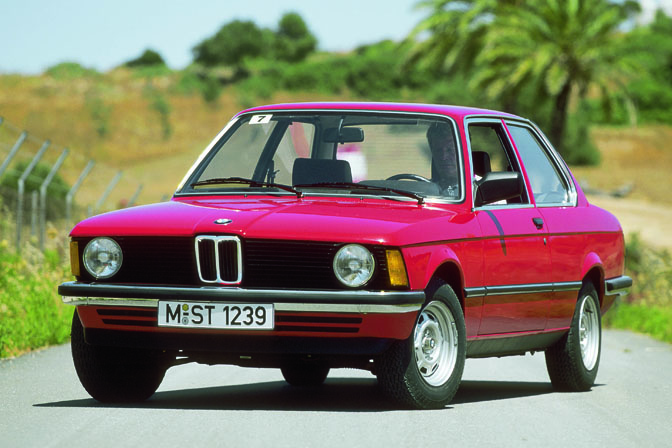
The first 3-series was the E21 model, introduced in 1975 for the European market. The E21 served as the replacement for the much-loved BMW 2002 and was only avialable in two-door body styles. There were several different trim models available from bare bones four cylinder cars, to fully loaded sixes. In parts of Europe the a lot 3-series models were considered simple transportation, while in the US the car carried more of a luxury image. This would continue over the life of the 3-Series.
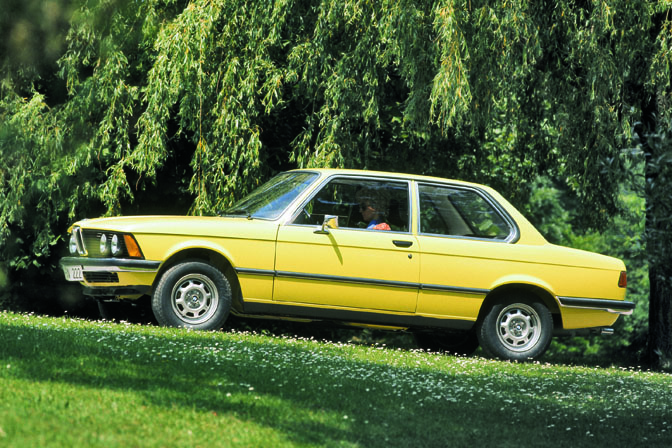
Of all the E21 models, the 323i was the top of the line. It was available with a 143hp inline six engine, 5-speed transmission and even a limited slip differential. With the E21 model, the 3-series had begun on its path to becoming a global phenomenon.
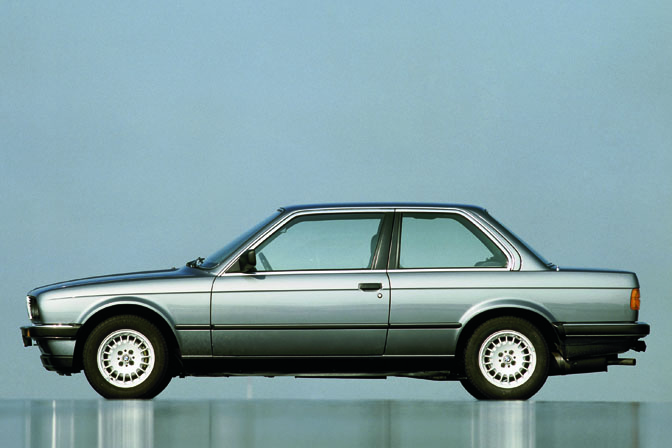
The next model in the 3-series line was the E30, introduced in 1982. Like the E31, it was available with both four and six cylinder engines. The E30 lineup was also expanded to include a four door sedan, a convertible, and the wagon model, which was known as the touring. The M3 model was also introduced on the E30 chassis, but we'll save that for a separate retrospective on the M models.
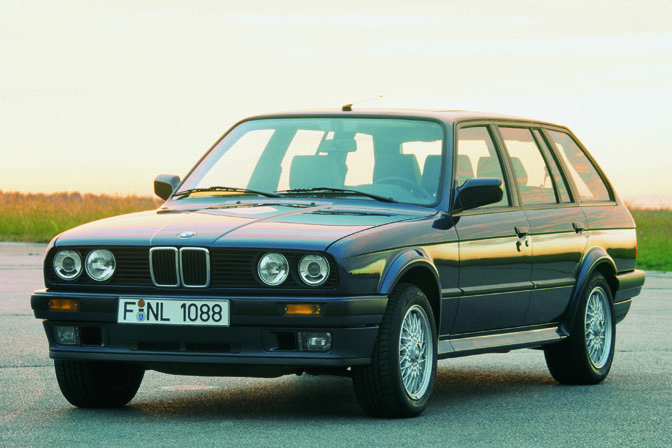
Here's a view of the 325 touring which was available in Europe. The E30 also marked the first instance of AWD being available on the 3-series . The variety of body styles helped skyrocket the E30's sales figures all over the planet. In later years the E30 chassis would become one of the most popular cars for grassroots racers of all time. This is especially true in Europe where we've seen countless examples of E30s being used as budget race cars and drift cars.
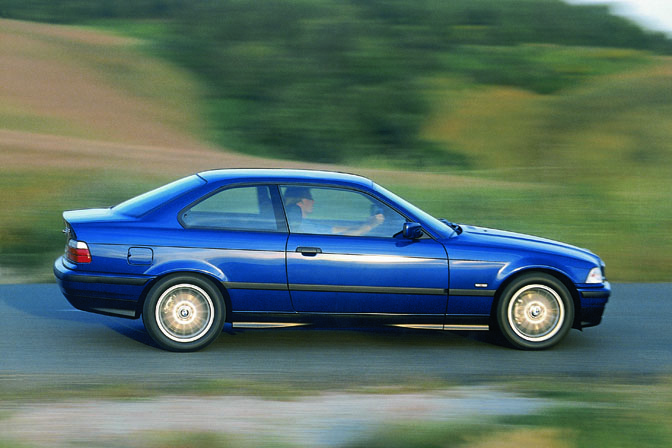
The E36 model was launched in 1991 with updated styling for the '90s. The E36 was a slightly larger and more complex replacement for the E30 and continued to bring the 3-series global fame. More powerful engines were available in this chassis, including a 2.8 liter inline six that made 190 horsepower.
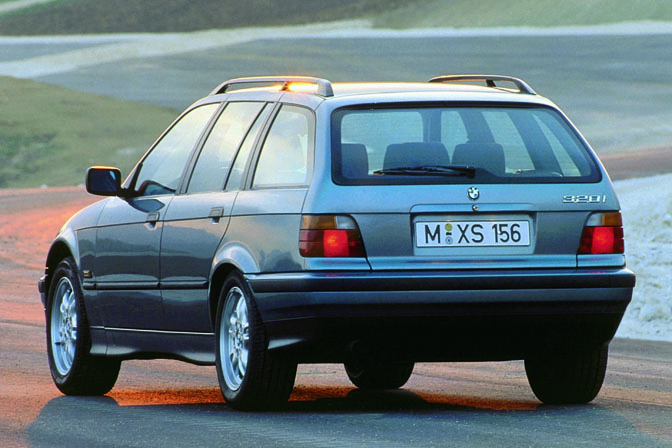
The E36 was again available as coupe, sedan, convertible, or touring wagon (markets outside of the United States).
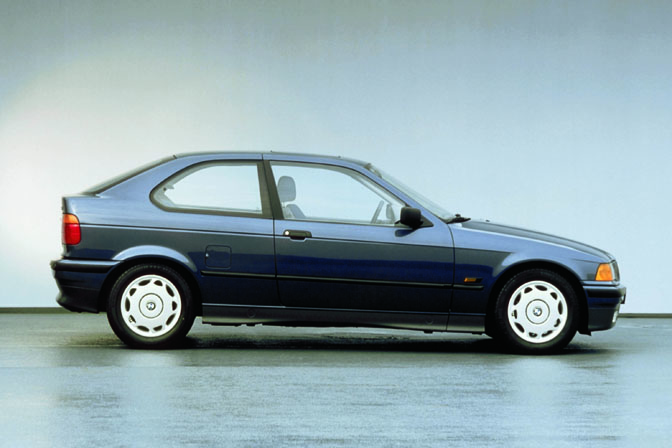
There was also a new compact car based on the E36 with a simplified rear suspension and a shortened hatchback rear end treatment. The compact version continued though the E46 model before being replaced with the new BMW 1-series.
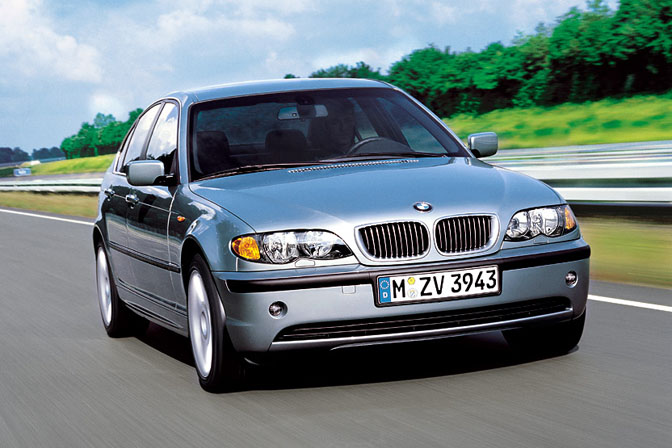
Replacing was the E36 was the E46 model, which hit the market in 1998. Again the car had advanced, but retained the balanced driving character that BMW's and the 3-Series in particular are known for. Power was up in the pricier models, with outputs reaching 235hp in cars like the 330i.
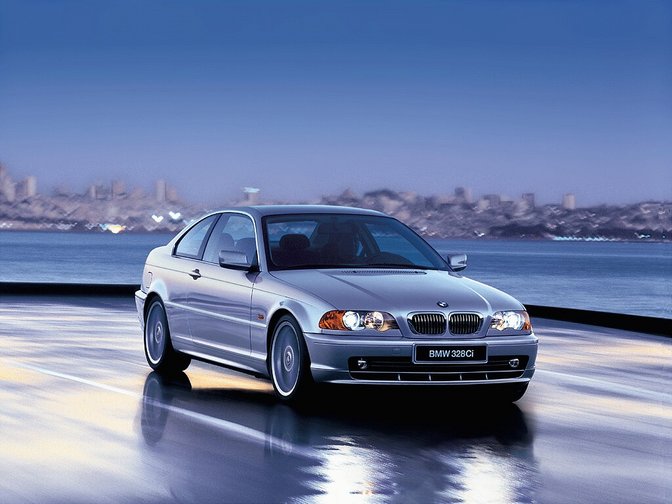
By 2005, the E46 3-Series had become one of the best-selling BMW's of all time. Like it had in the past, BMW had to confront the "don't mess with success" problem while designing the next 3-series.
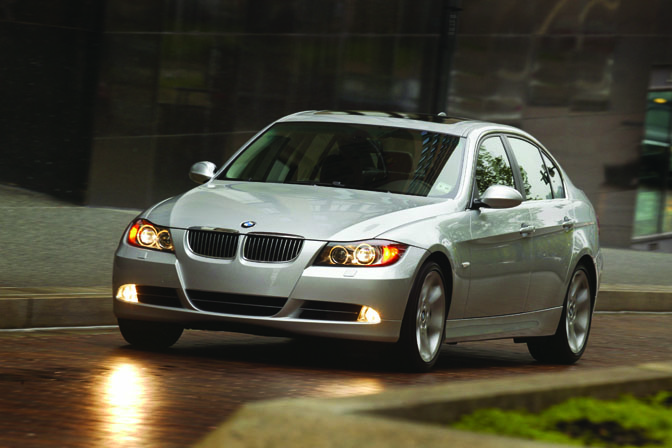
In '05 the E46 was replaced by the all new E90 model, which is available in numerous body styles. Like most model replacements, the E90 was larger, heavier, and more powerful than past models.
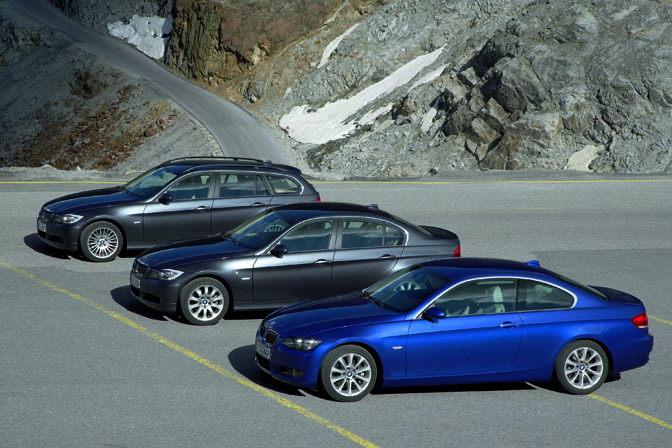
For enthusiasts, the big news with the E90 was the debut of the 335i and it's twin turbocharged inline six that made over 300hp – enough to rival the M3's of the past.
Now that the E90 has been on sale for several years, BMW engineers are hard at work at designing the next 3-series. Again, trying to figure out how to improve on one of the world's most loved cars.
Well, there's a quick look back at an automotive icon. Next time we'll take a look back at the history of the M badge.
-Mike Garrett
Photos from the BMW Archive






Hey Mike, great story as always, but all but 2 photos did not work? They didnt load or anything?
Great article! love all the information I gained from this. There's no doubt that the 3 Series is a legend in this world today.
Great post! The hatchback/compact thing is a BMW fail for me, I mean, it looks perfect in the front, looks like a BMW but then in the back, it's some sort of Opel... or something... not a BMW for me... Sad..
One thing I can't seem to understand about styling and designer trends over the years is how I noticed that as years go by the cars get larger and larger, heavier and heavier and fatter in some cases if not most.
Now would any one care to explain why is that? I mean some cars sure look nice, but the concept of larger and heavier gets old at some point.... and some cars just get uglier as they get larger and heavier over the years. I mean, in 10 years we might end up driving vans and trucks (sort of speack). Do the creative minds of designers all over the world suffer from a auto-designer fast food sindrome or what? McDonnalds?
I'm with Davy 100% when it comes to the size/weight thing.
It has to stop.
anyone else seeing broken picture links?
yea pics arnt working for me either
actually chris davy most 2010 cars have dropped some weight. lighter=better economy and performance. they add more and more tecnology that makes the car heavier. better? probably. for most people yes. cars havent gotten any heavier just more stuff in them. technology gets smaller and more compact everyday so therefore lighter cars are going to be expected in the future. any new car can be made light if you rip out the electronics i.e. a raccecar
ZOMG! Someone stole pic #8's trunk! Haha, but in all seriousness, E36s will always disappoint me because it was the only M model sold that lacked ITBs (US model, where I live). Also, many people see the E36 as "the beginning of the end" as it was so much larger than it's predecessor although you'd be hard-pressed to find a car who's next generation was smaller and lighter.

Actually, come to think of it, BMW is the only company who I can think who has pulled this off, comparing their E66 to the new F01. If I'm wrong, please post what other 2009/2010 model is both smaller and lighter than the previous generation, I honestly can't think of another example.
As for looks, BMW's latest designs have definitely been a love it/hate it thing, but it's hard to argue with sales numbers. Most "purists" (fanboys) seem to agree that "true" BMWs died in the early 80s with slight exceptions to the E38, E39 M5, M Coupe/Roadster, and maybe the E46 M3. Oh well, I guess I'm one of those fake BMW fans who yearns for that bloated, ugly, overweight, over-soft, too high-techy E92 M3.
*early 90s, not 80s.
yea, only 2 pictures loaded... whats up?
I dunno hey - I have a E30 318 with over 329000 Km's on the clock - it still runs & i just cant bear the thought of parting with it. I also have a E46 325i & that is my baby - new cars - yes bigger , heavier but mor power so it makes no difference. But have you seen the 135 ! ?? Man i want one of those !!! I even prefer it to the M3 ! Just my opinion! BMW's rule !
BMW's rule !
@Davy:
The cause is to find into the bigger engine, bigger turbos, more complicated suspensions, more optionals (think about the in-car audio), car security (airbags, stiffer body, electronics, ...).
The cars are bigger than the previous series because you have to fit everything (also the luggage) and have enough space to sit comfortably.
Only 2 pic's loaded for me as well. E30..... yum
To me all pictures works @.@
Nice article... but you forgot the E21 & E30 Baur versions.
@KaoKao That might be a good point, I get that they need luggage and comfortable sitting space, nu the engines can be smaller and deliver just as much power if not even more nowadays. Safety-wise... actually the smaller the car, the object, the stiffer and stronger it gets; just try a simple experiment: get a long stick, and try and brake it with your hand, press it or hit it karate style and than grab a real short one, even as wide as your palm and try to do the same. You'll never make it, the forces needed to brake a smaller more compact area are much higher than those needed to brake a large, wide spread area.
Smaller, thus stiffer, stronger and less material needed, thus lighter.
Safety... I'm one of those type of people that really think manufacturers should fit roll-cages into there cars. There safety tests and standards are crap they test the cars at 40-80 KM/H. Now seriously how many people drive at that speed all the time? Most of us hit 100 and don't even notice it, cause the car handles smoothly, it's quiet, doesn't shake all that much so there's not enough speed feed-back, for one of the reasons, that is. I know that roll-cages are not practical and ugly for some, bot boy can they save lives... There are also many other solutions to stiffen up the body, stich welding, filling the spaces within' the chassis with special foam or other types of materials... I know the car gets heavier, but it also gets a whole lot safer!
About mileage and overall performance, power, torque and so on... they are engineers.
Science can bring the dreams of man to reality, and it has proven that over and over again, the only thing needed is a will to do it.
What you say about the stick is right, but you can't think about the car as a block of all the same material or resistance to compression. Nowaday's cars have the front made to collapse and dissipate all the energy, so a longer nose can reduce more energy to a smaller car.
The living cell is really strong, because can't wreck. If you make an accident with a car of the last 10 years, you are sure that you can open the doors without problems (the ring that keep the door doesn't change his shape significantly).
So, with small cars, you don't have enough space in the front to absorb the impact and part of the energy goes on the living cell.
Living cell doesn't collapse, and everything goes on the inhabitants of the vehicle.
Putting a rollcage in today cars, without sacrificing the space, would need bigger cars. And so we will have again the problems of the previous comments.
If you want, we can talk via e-mail about this thing !
Of course, u can drop ur email. if u want to.
Now to answer your comment. I know that cars aren't one same block of materials and shape and don't have the same resistance to compression. The longer nose is justified for production cars. What u said about the living cell remaining intact is not completely true. Google or somethin' for pictures, videos of crashes and u'll see how many old days and nowadays cars get slit in half tworn, crushed. I remember seeing a some pictures of a Audi wagon, a modern one, that was in a accident. At first I thought there were 2 cars, it turned out that it was one car tworn in half after hitting a tree and the rear end was right next to the front end, giving the impression of 2 cars present. The driver made it by pure luck, the only thing left intact was his seat, the dash and everything around him was destroyed, if he had passengers, they would have been tworn to shreds. I have seen a lot of such images even in real life, so, again, I'm saying that even today's cars are by no means as safe as the media and the manufacturers are telling us they are. Of course they are far safer than the cars from and before the 80s but when it comes to actually pretending to be accident full-proof it's just a big fat dumb lie and I consider the safety standards to be preety much way off reality. If a car with full credits for safety would actually be that safe in real life, then no one would die or get hurt in them no matter what.
About space and rollcages, again engineers CAN find solutions as long as there's a will and focus to do it. And I pointed out that rollcages aren't the only solution to stiffen up the living cell of cars.
For any further discussions, if it's more comfortable for some of you, you can drop some lines on my address: chrisk.senshou@gmail.com
@Icewalker117 Actually there is a difference. If u pay attention to what the overall sport and mileage performance of a car is all about, added weight does make a difference. Even if u squeeze 500-600 BHP out of a engine to help it launch as fast and well as a lighter car, in the long run u get worse mileage figures and the handling becomes a problem. The heavier and larger the car, the harder it is to fix handling issues, issues that grow in amount and difficulty exponentially to the weight and size figures.
Have u noticed how nowadays cars have so much plastic in them? Have u asked urself why the bumpers aren't made of metal, steel or aluminum like they used to be?
1 It's easier to replace.
2 Weight. In order to get better mileage figures as well as performance out of mass production cars, the manufacturers are looking at ways of making the cars as light and economic as possible within' the budgets of mass production.
That's why u get plastic all over and why u get shitty plastic lots of times, whether it's the bumpers, the dash, the door handles or anything.
So although the cars are getting larger and heavier, the fact that they need to be light can't be ignored, that's why manufacturers are making some efforts about this.
But I think that the ideal solution to all the problems would be to just stop making busses and downsize a little bit.
It doesn't mean that if the competition is making a van, u need to make a truck out of your product. And sadly and quite dumb in some cases, that seems to be the trend for some years now.
awesome article...no love for the e36/8 ie m coupe? bmw skunkwerks gt!
E92 335i FTW!
@JonnyBimmer
Nissan 350Z to 370Z got smaller, but that is a short list